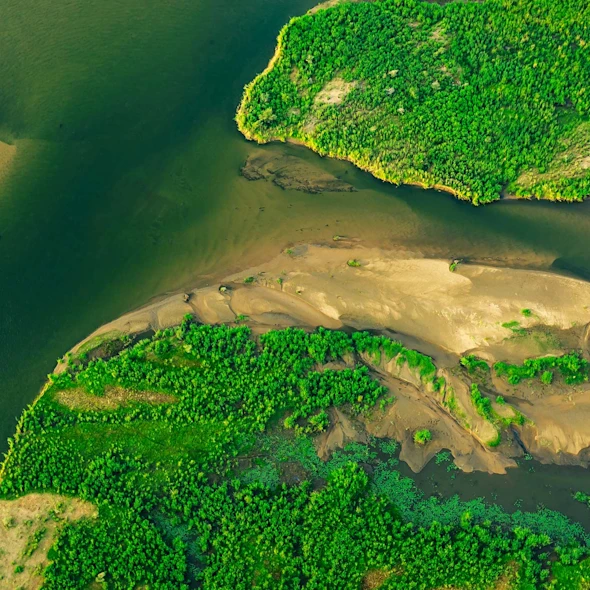As climate change has been accepted as a scientifically undeniable and universally recognized challenge, geospatial intelligence teams are applying the tools of their trade to mitigate its effects and address its impacts on aspects of our environment. Today, like nearly every other industry around the world, artificial intelligence and machine learning (AI/ML) are powerful tools that geospatial professionals now have at their disposal.
In years past, teams relied on relatively simplistic workflows of measuring the impacts of climate change. Remote sensing via multi-spectral satellites could provide images which could examine things like vegetation health, soil composition and water saturation. By looking at these images and analyzing health using the Normalized Difference Vegetation Index (NDVI), as one example, teams could assess the health and stress levels of vegetation.
The challenges with using images from satellites (at the time) was low temporal resolution, or how often a sensor could image the same spot on the earth’s surface. Some sensors were only providing new images on average every 17 days. Anything catastrophic happening between the satellites passes would be unobserved in near real-time.
Fast forward to today and there are more satellites in low-earth orbit (LEO) than ever. Researchers can obtain satellite images from almost anywhere on the planet at any time. Satellite sensors are better too, and they produce better images, with better resolution more often and with more data-dense outputs.
This availability of data is precisely why the proliferation of AI/ML technology is so important. These satellites are creating more data than humans could ever process or analyze. AI can help discover patterns and insights and we can capture these through deep learning and computer vision models to identify outliers or changes in the images.
AI/ML technologies have already been put to work in a variety of climate change-related applications. For instance, they have been utilized to monitor deforestation and illegal logging activities, detect changes in sea levels and ice sheets, and identify areas at risk of flooding or drought. By combining satellite imagery with AI/ML algorithms, we can track and predict the impacts of climate change on ecosystems and communities, allowing for more informed decision-making and proactive intervention.
When the models know what “right” looks like, they can give analysts indications and warnings about areas to monitor more closely, as one example. AI-assisted predictive models can help assess the impacts of climate change and identify ways to mitigate its effects.
These tools can also be used to understand and assess the impact of human-caused disasters, like the Ohio train derailment or the Indiana plastics factory explosion – to give two examples from recent weeks alone. These tools can help gauge the travel patterns of air pollutants and predict where they’ll go next as well as what the impact will be to the environment, and ultimately – to humans.
Overall, the consumption and analysis of massive amounts of data – enabled by AI/ML – has begun to change how we solve complex, climate-related problems. AI/ML can inform policy making at the federal, state, and local levels. They can also contribute to the growing body of academic research and understanding of climate change. This information, in turn, impacts how businesses operate and perform resource planning.
AI and ML enable us to leverage and employ more advanced, reliable, and automated analytics. And with a challenge as pressing as climate change, this becomes more important than ever.
Already, AI and ML are enabling more capabilities in the geospatial space than ever before. Leveraging that potential for the future will depend on ensuring data compatibility across application development and integration. It will depend on compliance with universally recognized data quality standards, like those from the Open Geospatial Consortium (OGC). We’ll also need to make existing and new AI/ML models more accessible to more users.
GDIT is working with customers and agency partners to address these challenges and to further enhance our AI capabilities in the geospatial intelligence community. We are developing and implementing strategies to make AI/ML a community effort. Fundamentally, we believe that, together, we can mitigate the impact of climate change and sustain our environment in a more positive manner.
And this Earth month, there doesn’t seem to be a more important mission than that.






